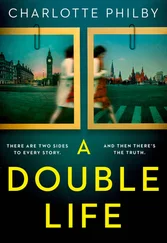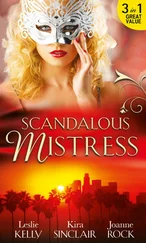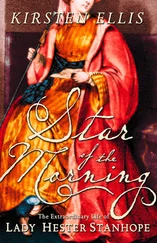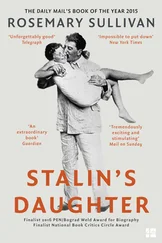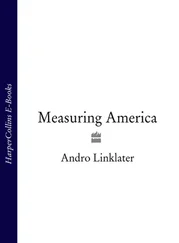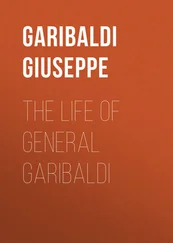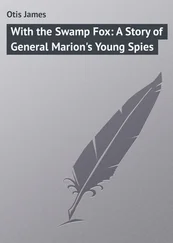Such generosity had to be earned. Wilkinson’s contribution was to deliver a vicious attack on General Benedict Arnold, his old patron and army companion but now Reed’s adversary. Appointed military governor of Philadelphia by Congress on the recommendation of Washington, Arnold was expressly instructed to “take every prudent step in your power, to preserve tranquility and order in the city and give security to individuals of every class and description.” He interpreted this to mean extending military protection to those on the Constitutionalists’ hit list and made no secret of his intentions. He hosted a public dinner to which Quaker and Loyalist guests were invited; sent his carriage to help Grace Galloway, Joseph’s wife, when she was evicted from Trevose; and was soon seen in the company of Peggy Shippen, daughter of a judge strongly suspected of being a Loyalist.
The Constitutionalists responded by charging him in February 1779 with using army resources to aid his own business interests. Soon afterward Wilkinson weighed in with the specific and damaging accusation that Arnold had “borrowed a sum of money of the Commissaries [responsible for buying the army’s food], which was afterwards discounted on a Contract for Rum,” in other words, that the commissaries had advanced him money to buy rum at a price higher than the amount Arnold actually paid, and that he had pocketed the difference. Whether it was this blow that finally cracked him, or the influence of his newly married wife, Peggy, that April Arnold let it be known to the British through a Loyalist intermediary that he was open to offers.
“If your Excellency thinks me criminal,” he wrote Washington on May 5, “for heaven’s sake let me be immediately tried and, if found guilty, executed.” It was a curiously extreme reaction to the allegations of Reed and Wilkinson: their charges were, with one exception, eventually thrown out and might at worst have warranted his forcible retirement. But, as an unconscious warning of what he was contemplating, the reaction was not out of place. All the impulses to treachery were referred to in his letter. He was in debt, had not been paid for more than a year, and was alleged by Congress to owe the government three thousand dollars. He was under constant attack by the “artful and unprincipled men” who followed Reed. And he was in pain from his barely healed Saratoga wound that had left one leg two inches shorter than the other. “I have made every sacrifice of fortune and blood,” he wrote, “and become a cripple in the service of my country . . . I little expected to meet the ungrateful returns I have received from my countrymen.” Five days later he made direct contact with the British general Sir Henry Clinton.
AS ARNOLD HEADED TOWARD the act that defined his place in history, Wilkinson set out to live the life of a country gentleman, the beginning as it turned out of a more circuitous route to a similar destination. The Galloways’ mansion needed a dozen servants to run it; the stables held a score of horses with grooms to look after them; there was a distillery worked by stillmen; shepherds and cattlemen to care for the livestock; and farmhands to sow and harvest the wheat. Trevose was a small kingdom.
Wilkinson reveled in its possibilities. He and Nancy organized balls elegant enough to be reported in the Philadelphia press and visited neighbors in a carriage drawn by four horses with two footmen at the back. He took an interest in farming, admired his cattle, gave lavishly to charity, and joined the Freemasons. All this was expensive, and the Biddle family fortune was not unlimited. But, according to the shrewdest advice, Trevose could hardly fail to be a good investment. As the population increased, the value of land would rise, too. Even a financier as astute as Silas Deane, whose deals were too sharp for conventional tastes, agreed that land was the best investment. “If we review the rise and progress of private fortunes in America,” he wrote in 1781, “we shall find that a very small proportion of them has arisen or been acquired by commerce, compared with those made by prudent purchases and management of lands.”
Lacking capital of his own, Wilkinson had paid the deposit of £1,160 on Trevose with Nancy’s money, and it was owned in both their names. But he needed an income to pay the remainder of the purchase price, so on July 29, 1779, he accepted Congress’s offer of the post of clothier general to the army at a salary of $5,000 a year.
It might lack the glory of Saratoga, but next to food and weapons no item was more crucial to Washington’s Continental Army than the supply of uniforms. Only the clothier general could prevent a repetition of the scenes at Valley Forge—“Men without Cloathes to cover their nakedness, without Blankets to lay on, without Shoes, by which their Marches might be traced by the Blood from their feet,” in Washington’s vivid words. Between the purchase of blankets, clothes, and shoes and their issue to the troops stood a system of paralyzing complexity.
Most clothing was imported from Europe through Boston with up to a year’s delay between order and delivery, although shoes and blankets were produced in the United States. They were paid for by Congress, but responsibility for their purchase and allocation was divided between the Continental Army and the thirteen individual states. The clothier general’s specific duty was to procure and distribute clothes, shoes, and blankets for the Continental Army, but he was answerable not to the commander in chief but to the Board of War, and the board kept him permanently short of money and wagons.
“The clothing department has occasioned more trouble to me and has given more distrust to the officers than [any] one thing in the army,” Washington testified to Congress, admitting that he had been forced to act as his own clothier general even to the point of sending out officers on house-to-house searches for garments to wear. A year after Valley Forge, with the morale of the 25,000- strong Continental Army hardened by its experience, and its drill and training molded by Friedrich von Steuben’s Blue Book of discipline, Washington deemed uniforms more essential than ever to reflect the soldiers’ new professionalism. Lack of them created “an ill Appearance” and made good order harder to maintain, Washington explained to the civilians in Congress. “For when a Soldier is convinced that it will be known by his dress to what Corps he belongs, he is hindered from committing many faults for fear of detection.”
Washington’s one expectation of Wilkinson was that, to sort out problems as they occurred, “you will employ as much of your time with the Army as will be consistent with the great Objects of your appointment.” In this, he was per sistent ly disappointed.
Within two months of Wilkinson’s appointment, the commander in chief was wearily writing to Congress, “I am again reduced to the necessity of acting the part of Clothier General.” During the next year, the tone of his requests for Wilkinson’s presence at headquarters grew steadily more acerbic as the official clothier general repeatedly found excuses to remain in Philadelphia, or to be absent on duties elsewhere. Even a direct order from Washington in October 1780—“I shall expect to see you with the army immediately after receipt of this letter”—was ignored for ten days before he received the casual reply “I expect this day to borrow a sufficient fund to carry me to your excellency’s quarters, and propose setting out tomorrow or the next day.”
Initially Wilkinson attempted to make an inefficient clothing system work, but lack of funds exacerbated its shortcomings. By early 1780, he had established three supply depots in Massachusetts, New York, and Pennsylvania, but in June, when the depot in Massachusetts held “thirty-five waggons load of Summer Clothing that the army are most distressed for,” he had no means of transporting it to Pennsylvania where it was needed. In the fall of 1780, he warned that “the very scanty stock of clothing on hand” made winter shortages inevitable, but although material had been purchased in Boston, the Board of War was unable to have it made into uniforms, “for want of money to pay the workmen.” In October 1780, Wilkinson presented Congress with a plan to centralize both the procurement and issue of uniforms and blankets under his office, rather than continuing to have fourteen different departments— the thirteen states plus the clothier general— bid against each other for the same clothing, each working on commission and spending money provided by Congress. Nothing came of this seemingly rational proposal, however, because it depended on a central government with sufficient power to impose its wishes on the states that brought it into being.
Читать дальше



